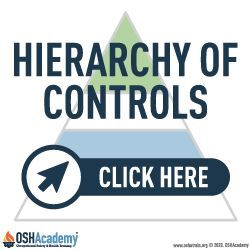Hierarchy of Controls
The hierarchy of controls should be applied to ensure you use the most effective control method. The hierarchy of controls establishes the following control categories in order of preference: elimination, substitution, engineering, administrative, and personal protective equipment (PPE). Controlling hazards within a workplace help prevent accidents or injuries. Controls, such as elimination, substitution, and engineering, are most effective because they do not rely on human behavior. Administrative and PPE controls are least effective since they may not eliminate the hazard and rely on human behavior and performance. A cost-benefit analysis can help guide decision making when implementing the hierarchy of controls.
Elimination and Substitution
Whenever possible, exposure to potential hazards should be eliminated or reduced by substituting with less hazardous materials. Choosing mercury-free equipment or equipment made with less toxic substances minimizes the potential for worker exposure. For example, replacing mercury thermometers and sphygmomanometers with mercury-free devices eliminate the hazard.
When in the development phase of a new process, implementing elimination or substitution controls may be inexpensive and easy to implement. It may be more difficult and expensive to implement elimination or substitution controls for existing operations.
Knowledge Check Choose the best answer for the question.
1-4. Which control method is most effective at preventing or reducing exposure to a hazard?
You forgot to answer the question!

